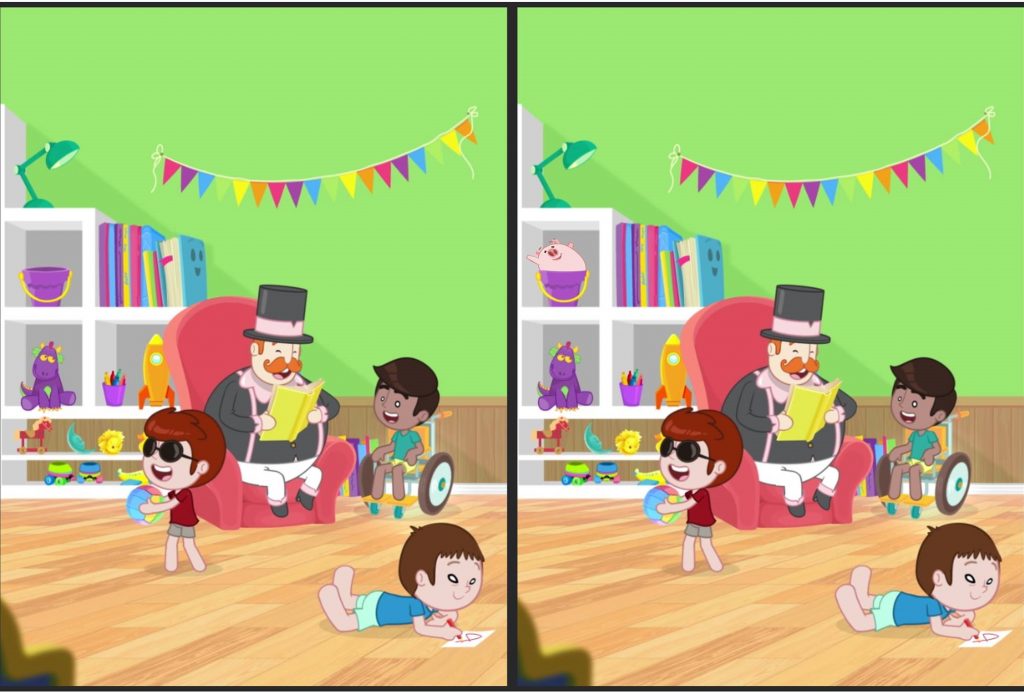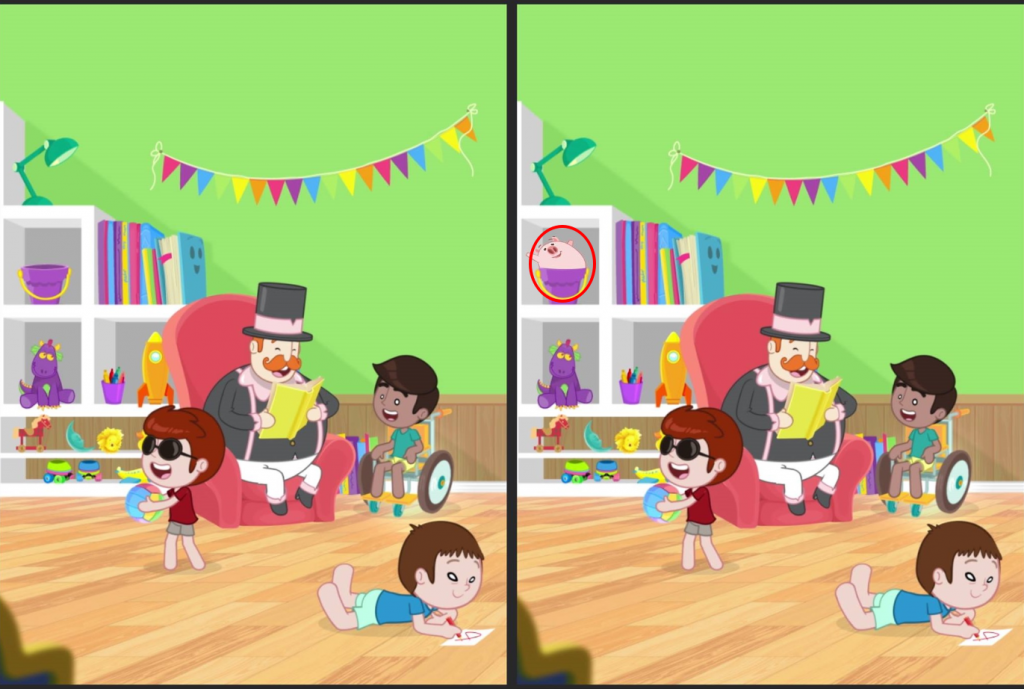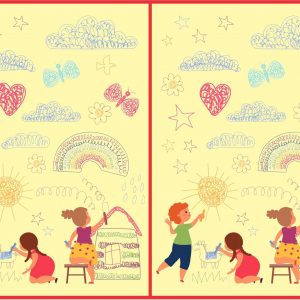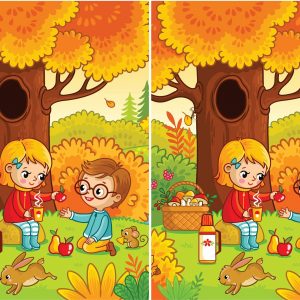The Magic of Storytelling: How Books and Play Inspire Childhood Imagination
A warm and inviting scene unfolds in this image, where children are immersed in a world of stories, play, and laughter. A charming storyteller, dressed in a vintage top hat and suit, sits in a cozy red armchair, reading aloud from a bright yellow book. Around him, children engage in different activities—one listens attentively from a wheelchair, another joyfully plays with a ball, and a little artist sprawls on the floor, sketching their own masterpiece. The background, filled with colorful books, toys, and festive decorations, creates an atmosphere of wonder, creativity, and learning.
Storytelling and play are the cornerstones of childhood development, shaping young minds and nurturing their curiosity. This image beautifully illustrates the power of books, shared experiences, and the boundless imagination of children. But what exactly makes storytelling so impactful? And how does play complement this journey of learning and discovery?
Let’s explore the incredible ways in which books, interactive storytelling, and creative play contribute to a child’s cognitive, social, and emotional growth.

The Power of Storytelling in Childhood Development
Storytelling is one of the most ancient and effective methods of passing down knowledge, traditions, and emotions. Whether it’s through fairy tales, fables, or personal anecdotes, stories captivate children, helping them understand the world around them.
Enhancing Language and Communication Skills
Books and oral storytelling expose children to new vocabulary, sentence structures, and expressive language. When they listen to stories, they unconsciously absorb grammar, pronunciation, and the rhythm of speech, laying a strong foundation for communication and literacy.
Developing Emotional Intelligence
Stories introduce children to different emotions, characters, and situations, helping them navigate their own feelings. By identifying with characters, children learn empathy, kindness, and problem-solving skills. A tale about perseverance teaches resilience, while a story about sharing fosters generosity.

Encouraging a Love for Reading
The storyteller in the image represents a crucial role model—someone who sparks a love for books in children. When kids associate reading with joy, laughter, and shared moments, they are more likely to develop a lifelong passion for books and learning.
How Play Complements Storytelling
Play and storytelling go hand in hand. A well-told story often inspires children to reenact it, create new versions, or expand the tale through their own imagination.
Role-Playing and Imaginative Play
The child with sunglasses and a ball in the image is fully engaged in play, demonstrating how children naturally bring stories to life. Through role-playing, kids become the heroes of their own narratives, acting out adventures and learning valuable lessons along the way.
Social Development Through Group Play
Playing together helps children develop cooperation, teamwork, and problem-solving skills. The boy in the wheelchair, listening attentively, is part of an inclusive play environment, showing how storytelling and shared experiences bridge differences and encourage friendships.

The Importance of a Stimulating Environment
A child’s surroundings play a huge role in their development. The bright, book-filled room in the image reflects a space that encourages exploration, learning, and creativity.
A Book-Filled Room Sparks Curiosity
Bookshelves brimming with colorful stories invite children to pick up a book and explore new worlds. A well-curated selection of age-appropriate books ensures that children always have something to spark their imagination.
Toys That Encourage Learning
From plush toys to interactive games, the carefully arranged toys in the background remind us that play is an essential part of education. Educational toys, such as puzzles, building blocks, and art supplies, encourage problem-solving and creativity.
The Role of Caregivers in Nurturing Imagination
Parents, teachers, and caregivers play an essential role in fostering creativity and a love for learning. The storyteller in the image embodies the joy of shared experiences, demonstrating how adults can inspire children through active engagement.

Making Storytime Special
Reading aloud with enthusiasm, using different voices, and asking questions makes storytelling more interactive. Children are more likely to retain information and develop a deeper understanding of the story when they are actively engaged.
Encouraging Open-Ended Play
Instead of structured activities, allowing children the freedom to explore and create their own stories fosters innovation. A cardboard box can become a spaceship, a teddy bear can be a brave knight, and a simple ball can spark an imaginary adventure.

Conclusion: The Lasting Impact of Stories and Play
The magical moment captured in this image reminds us of the profound impact that books and play have on childhood development. Through storytelling, children develop language, empathy, and creativity, while play helps reinforce those lessons in a hands-on, experiential way.
By creating an environment rich in books, toys, and opportunities for imaginative play, we empower children to become confident, curious, and lifelong learners. Whether through the turn of a page or the bounce of a ball, every moment of play and storytelling shapes a brighter future for the next generation.





